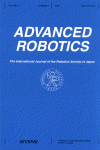
Action recognition and understanding through motor primitives
In robotics, recognition of human activity has been used extensively for robot task learning through imitation and demonstration. However, there has not been much work performed on modeling and recognition of activities that involve object manipulation and grasping. In this work, we
deal with single arm/hand actions which are very similar to each other in terms of arm/hand motions. The approach is based on the hypothesis that actions can be represented as sequences of motion primitives. Given this, a set of five different manipulation actions of different levels of complexity
are investigated. To model the process, we use a combination of discriminative support vector machines and generative hidden Markov models. The experimental evaluation, performed with 10 people, investigates both the definition and structure of primitive motions, as well as the validity of
the modeling approach taken.
Keywords: ACTION RECOGNITION; HIDDEN MARKOV MODELS; OBJECT MANIPULATION; PRIMITIVE ACTIONS; SUPPORT VECTORS MACHINES
Document Type: Research Article
Affiliations: 1: Computational Vision and Active Perception Laboratory, Center for Autonomous Systems, Royal Institute of Technology, 100 44 Stockholm, Sweden 2: Department of Information Technology, Lappeenranta University of Technology, Finland
Publication date: 01 November 2007
- Access Key
- Free content
- Partial Free content
- New content
- Open access content
- Partial Open access content
- Subscribed content
- Partial Subscribed content
- Free trial content